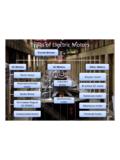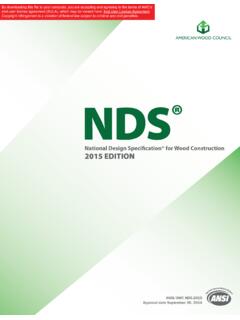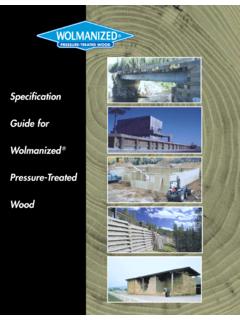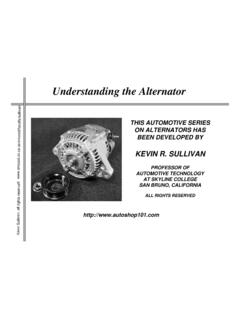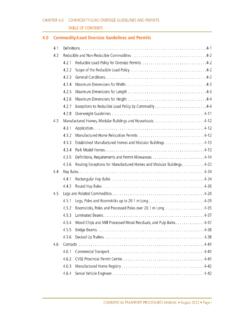Transcription of Construction Standards to Comply with Australian Standard ...
1 ABN 26 807 194 868. Suite 1 146 Oak Road KIRRAWEE NSW. Phone 8880 4480. Email Construction Standards to Comply with Australian Standard 3959 2009 & Appendix 3 of Planning for Bushfire Protection Bushfire Attack Level (BAL) - 29 (High). This document has been prepared to assist in the preparation of Construction certificate plans and specifications in respect to BAL 29. BAL 29 is primarily concerned with protection of your building from ember attack and burning debris ignited by wind borne embers and radiant heat up to and including 29 kW/m2. To Comply with the Building Code of Australia, your Construction or complying development certificate plans must include details of the building Construction relevant to the level of bushfire. Those parts of this document that relate to your development must be included on the Construction certificate plans or in the Construction specification. The Construction requirements for the next lower BAL may be used for an elevation of a dwelling that is not exposed to the source of a bushfire.
2 An elevation is not exposed if the entire elevation is completely screened from the source of a bushfire by another part of the building. Any element of Construction or system that satisfies the test criteria of AS may be used in lieu of the applicable requirements below (see Clause of the Standard ). SARKING. Sarking, where used for bushfire protection shall be: a. Non-combustible; or b. Breather-type sarking complying with and with a flammability index of not more than 5 and sarked on the outside of the frame; or c. An insulation material conforming to the appropriate Australian Standard for that material. Summary of BAL 29 Standards Page 1. Edition August 2014. SUBFLOOR SUPPORTS. This Standard does not provide Construction requirements for subfloor supports where the subfloor space is enclosed with . 1) a wall that complies with the requirements for an external wall below; or 2) a mesh or perforated sheet with a maximum aperture of 2 mm, made of corrosion resistant steel, bronze or aluminium; or 3) a combination of Items (a) and (b) above.
3 Where the subfloor space is unenclosed, the support posts, columns, stumps, piers and poles shall be . (1) of non-combustible material; or (2) of bushfire-resisting timber (refer to the table at the end of this document); or (3) a combination of Items (i) and (ii) above. NOTE: This requirement applies to the principal building only. See requirements below for verandas, decks, steps, ramps and landings. FLOORS. 1) Elevated floors a) Enclosed subfloor space The Standard does not provide Construction requirements for elevated floors, including bearers, joists and flooring, where the subfloor space is enclosed with . i) a wall that complies with the Standards for an external wall below; or ii) a mesh or perforated sheet with a maximum aperture of 2 mm, made of corrosion resistant steel, bronze or aluminium; or iii) a combination of Items (a) and (b) above. b) Unenclosed subfloor space Where the subfloor space is unenclosed, the bearers, joists and flooring, less than 400 mm above finished ground level, shall be one of the following: i) materials that Comply with the following: (a) bearers and joists shall be.
4 I) non-combustible; or ii) bushfire-resisting timber (refer to the table at the end of this document); or iii) a combination of Items (i) and (ii) above. Summary of BAL 29 Standards Page 2. Edition August 2014. (b) flooring shall be . i) non-combustible; or ii) bushfire-resisting timber (refer to the table at the end of this document); or iii) timber (other than bushfire-resisting timber), particleboard or plywood flooring where the underside is lined with sarking-type material or mineral wool insulation; or c) a combination of any of Items (i), (ii) or (iii) above; or ii) a system complying with AS This Standard does not provide Construction requirements for elements of elevated floors, including bearers, joists and flooring, if the underside of the element is 400 mm or more above finished ground level. EXTERNAL WALLS. 1) Walls The exposed components of an external wall shall be: (a) Non-combustible material such as cavity brick, masonry veneer walls with an outer leaf of clay, concrete, calcium silicate or natural stone, precast or in situ walls of concrete or aerated concrete or earth walling including mud brick; or (b) Timber logs of a species with a density of 680 kg/m3 or greater at a 12 percent moisture content; of a minimum nominal overall thickness of 90 mm and a minimum thickness of 70 mm (see Clause Standard ); and gauge planed; or (c) Cladding that is fixed externally to a timber-framed or a steel-framed wall and is.
5 (i) Fibre-cement a minimum of 6 mm in thickness; or (ii) Bushfire-resisting timber (refer to the table at the end of this document); or (iii) Steel sheeting; or (iv) A combination of any of Items (i), (ii) or (iii) above; or (d) A combination of any of Items (a), (b) or (c) above. 2) Joints All joints in the external surface material of walls shall be covered, sealed, overlapped, backed or butt-jointed to prevent gaps greater than 3 mm. 3) Vents and weepholes Vents and weepholes in external walls shall be screened with a mesh with a maximum aperture of 2 mm, made of corrosion-resistant steel, bronze or aluminium, except where the vents and weepholes have an aperture less than 3 mm. Summary of BAL 29 Standards Page 3. Edition August 2014. EXTERNAL WINDOWS and DOORS. 1) Windows Window assemblies shall Comply with one of the following: (a) They shall be completely protected by a bushfire shutter that complies with Note 1. below; or (b) They shall Comply with the following: (i) Window frames and window joinery shall be made from: (A) Bushfire-resisting timber (refer to the table at the end of this document); or (B) Metal; or (C) Metal-reinforced PVC-U.
6 The reinforcing members shall be made from aluminium, stainless steel, or corrosion-resistant steel and the frame and sash shall satisfy the design load, performance and structural strength of the member. (ii) Externally fitted hardware that supports the sash in its functions of opening and closing shall be metal. (iii) Glazing shall be a minimum of 5 mm toughened glass. NOTE: Where double-glazed units are used, the above requirements apply to the external face of the window assembly only. (iv) Where glazing is less than 400 mm from the ground or less than 400 mm above decks, carport roofs, awnings and similar elements or fittings, having an angle less than 18 degrees to the horizontal and extending more than 110 mm in width from the window frame, that portion shall be screened with a screen that complies with Note 2 below. (iv)The openable portion of windows shall be screened with screens complying with Note 2 below. 2) Screens Screening of the openable portions of all windows is required in all BALs to prevent the entry of embers to the building when the window is open.
7 Screening of the openable and fixed portions of some windows is required in some BALs to reduce the effects of radiant heat on some types of glass. If the screening is required to reduce the effects of radiant heat on the glass, the screening has to be external so that the glass in the openable portion of the window will be protected' when it is shut. If the screening is required only to prevent the entry of embers, the screening may be fitted externally or internally. Summary of BAL 29 Standards Page 4. Edition August 2014. 3) Doors Side-hung external doors (including French doors, panel fold and bi-fold doors). Side-hung external doors, including French doors, panel fold and bi-fold doors, shall Comply with one of the following: (a) Doors and door frames shall be protected by bushfire shutters that Comply with Note 1; or (b) Doors and door frames shall be protected externally by screens that Comply with Note 2; or (c) Doors and door frames shall Comply with the following: (i) Doors shall be.
8 (A) non-combustible; or (B) a solid timber, laminated timber or reconstituted timber door, having a minimum thickness of 35 mm for the first 400 mm above the threshold; or (C) a door, including a hollow core door, protected externally by a screen that complies with Note 2 below; or (D) a fully framed glazed door, where the framing is made from non- combustible materials or from bushfire resisting timber (refer to the table at the end of this document). (ii) Externally fitted hardware that supports the panel in its function of opening and closing shall be metal. (iii) Where doors incorporate glazing, the glazing shall be toughened glass with a minimum thickness of 6mm. (iv) Doors shall be tight-fitting to the door frame and to an abutting door, if applicable. (v) Door frames shall be made from: (A) Bushfire-resisting timber (refer to the table at the end of this document); or (B) Metal; or (C) Metal-reinforced PVC-U. The reinforcing members shall be made from aluminium, stainless steel, or corrosion-resistant steel and the door assembly shall satisfy the design load, performance and structural strength of the member.
9 (vi) Where glazing is less than 400 mm from the ground or less than 400 mm above decks, carport roofs, awnings and similar elements or fittings, having an angle less than 18 degrees to the horizontal and extending more than 110 mm in width from the window frame, that portion shall be screened with a screen that complies with Note 2 below. Summary of BAL 29 Standards Page 5. Edition August 2014. (vii) Weather strips, draught excluders or draught seals shall be installed at the base of side-hung external doors. (d) Sliding doors Sliding doors shall Comply with one of the following: (a) They shall be completely protected by a bushfire shutter that complies with Note 1; or (b) They shall be completely protected externally by screens that Comply with Note 2; or (c) They shall Comply with the following: (i) Any glazing incorporated in sliding doors shall be toughened glass with a minimum thickness of 6mm. (ii) Both the door frame supporting the sliding door and the framing surrounding any glazing shall be made from: (A) (Bushfire-resisting timber (refer to the table at the end of this document); or (B) Metal; or (C) Metal-reinforced PVC-U.)
10 The reinforcing members shall be made from aluminium, stainless steel, or corrosion-resistant steel and the frame and the sash shall satisfy the design load, performance and structural strength of the member. (iii) There is no requirement to screen the openable part of the sliding door. However, if screened, the screens shall Comply with Note 2. NOTE: The Construction of manufactured sliding doors should prevent the entry of embers when the door is closed. There is no requirement to provide screens to the openable part of these doors as it is assumed that a sliding door will be closed if occupants are not present during a bushfire event. Screens of materials other than those specified may not resist ember attack. (iv) Externally fitted hardware that supports the panel in its function of opening and closing shall be metal. (v) Sliding doors shall be tight-fitting in the frames. (e) Garage Doors The following apply to vehicle access doors: (a) The lower portion of a vehicle access door that is within 400 mm of the ground when the door is closed shall be made from.

